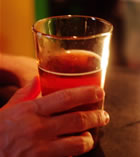Pilates (Puh-LAH-teez) continues to grow in popularity because it can be an excellent exercise program for adults of any age. If your doctor gives you the green light, a regular Pilates workout can slowly strengthen your most important muscles without pain and sweating. Daily exercise is a key part of a healthy lifestyle.
Besides improving your strength, Pilates increases your flexibility, balance and posture with its controlled movements on the floor or a mat or with machines. These movements concentrate on building your "core" muscles.
The Core Connection
Your core is made of the muscles that support and stabilize your lower spine, back and hip areas. These muscles enable you to sit up straight from a prone position or get up from a deep chair.
When you exercise, you need to single them out to keep them strong. A weak or neglected core increases your risk of back injury. Pilates can also help reduce older adults' risk of falling and prevent curvature of the spine due to osteoporosis.
A person beginning to learn Pilates will first be introduced to the abdominal connection. A typical workout should start with light warm-up exercises that loosen the shoulders, hip joints and spine. Some simple abdominal moves should come next, followed perhaps by leg work and finished off with upper-body strengthening in the chest and arms. In every exercise, it is important to keep the abdominal muscles connected to the movement.
A Basic Pilates Warm-Up
Many people get into Pilates through introductory books and videotapes. If you decide to take a class, look for an instructor certified by a group with a rigorous training program, so you learn proper technique.
Here is a simple Pilates exercise sequence to try:
- Place an exercise mat or thick towel on the floor. Lie on it, face-up. Pull your knees to your chest. Inhale deeply. As you exhale, sink your chest and abdomen toward the floor.
- Still on the floor, hold your back and abdomen in place as you stretch your arms toward your feet. Lengthen your arms and lift your head as much as you can without straining your neck. Hold this position and raise your legs until they point at the ceiling, while you squeeze them together. Move your arms up and down, keeping them straight, as if you were patting the ground, for five counts.
- Lower your legs to a 45-degree angle without letting your spine arch away from the floor. Continue pumping your arms and breathing for 100 counts, or as many as you can do.
- Recline your head on the mat or towel and bring your knees back to your chest. Then Stretch out to your full length and relax.
Popular Books
- Pilates for Beginners
- Pilates for Dummies
- The Complete Guide to Joseph H. Pilates' Techniques of Physical Conditioning: With Special Help for Back Pain and Sports Training
- Pilates for Every Body : Strengthen, Lengthen, and Tone-- With This Complete 3-Week Body Makeover
Popular DVD's
- Classical Pilates Technique - The Complete Mat Workout Series (Modified Basic / Basic / Intermediate / Advanced / Super Advanced)
- Pilates Complete For Weight Loss
- Pilates Workout for Dummies
- Pilates Complete for Everyone
- Pilates - Beginning Mat Workout
- Pilates Weight Loss Workout for Dummies
AICR








